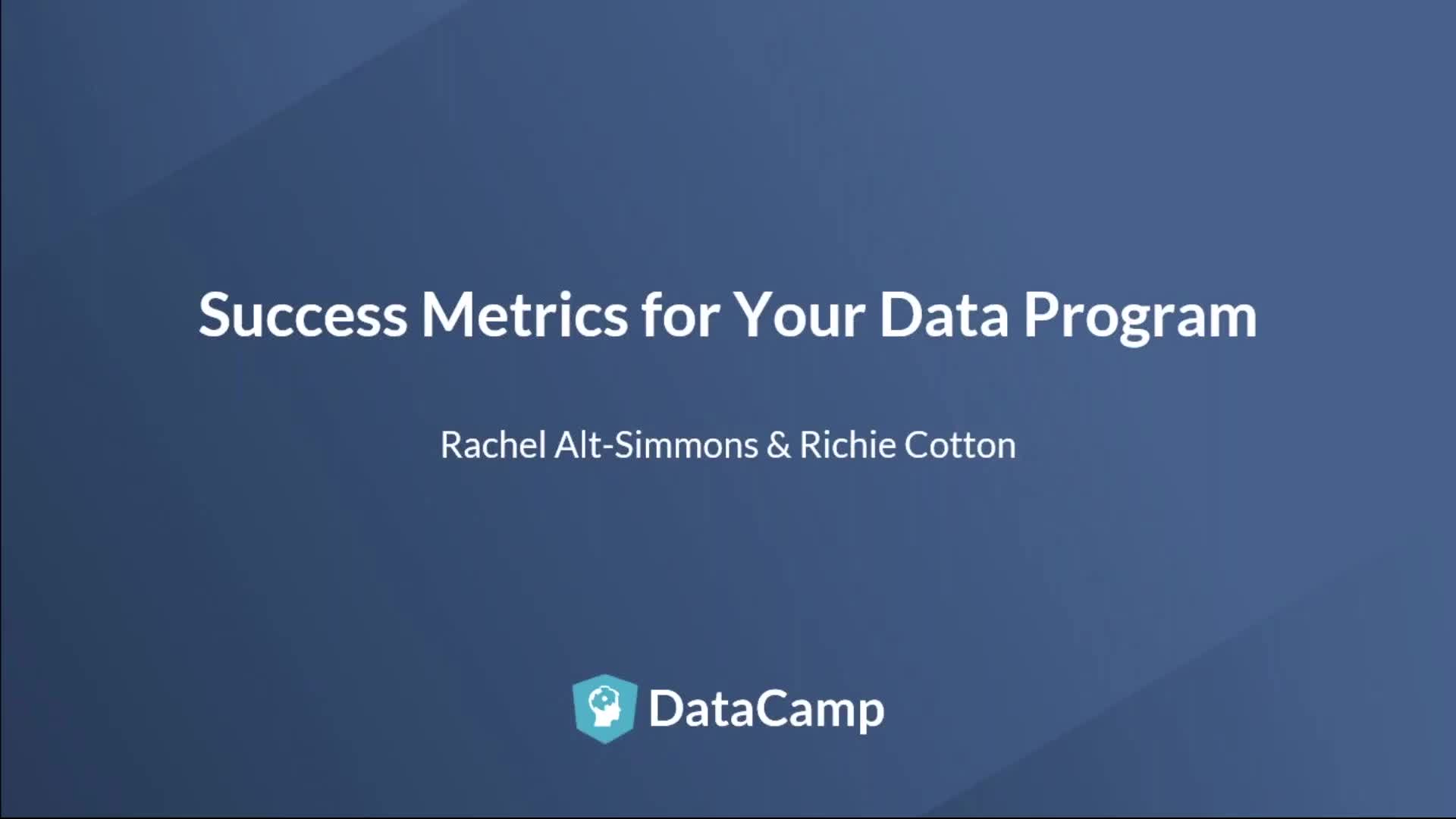Haut-parleurs


Rachel Alt-Simmons
Head of Strategic Design, Data, Pricing & Analytics at AXA XL
Formation de 2 personnes ou plus ?
Donnez à votre équipe l’accès à la bibliothèque DataCamp complète, avec des rapports centralisés, des missions, des projets et bien plus encoreConnexe
white paper
Your Organization's Guide to Data Maturity
Learn how evaluate and scale data maturity throughout your organizationwebinar
Train Your Workforce to Thrive in a Data-Driven Age
Develop a scalable data training program and measure its effectiveness.webinar
Measuring the ROI of Data Literacy Programs
Practical steps to help you measure the ROI of L&D programs for data skills.webinar
Measuring the ROI of Data Literacy Programs
Practical steps to help you measure the ROI of L&D programs for data skillswebinar
Fostering Confidence with Data Across Your Organization
Learn how to empower your entire organization with data literacy.webinar
The 5 Dimensions of Data Maturity
Discover the path to becoming a data-driven organization.Join 5000+ companies and 80% of the Fortune 1000 who use DataCamp to upskill their teams.
Loved by thousands of companies
